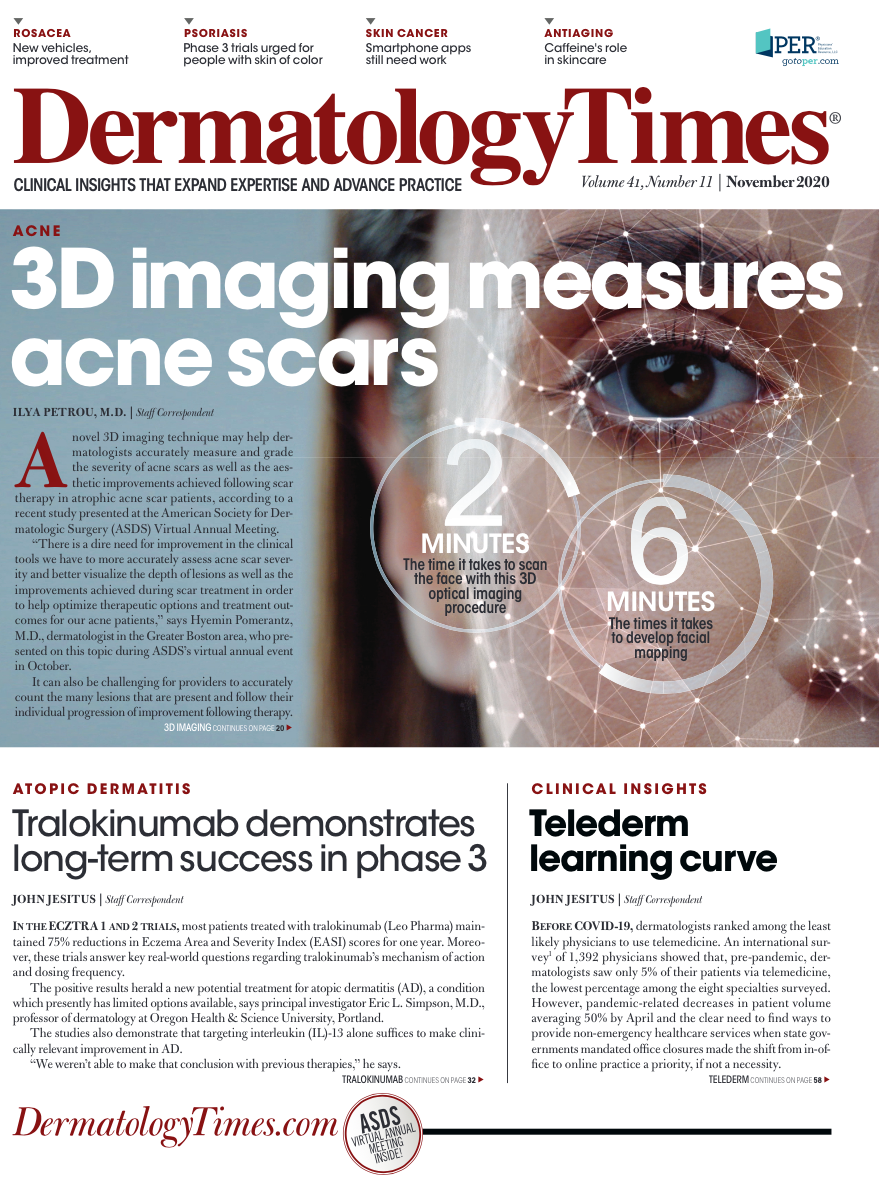- Case-Based Roundtable
- General Dermatology
- Eczema
- Chronic Hand Eczema
- Alopecia
- Aesthetics
- Vitiligo
- COVID-19
- Actinic Keratosis
- Precision Medicine and Biologics
- Rare Disease
- Wound Care
- Rosacea
- Psoriasis
- Psoriatic Arthritis
- Atopic Dermatitis
- Melasma
- NP and PA
- Skin Cancer
- Hidradenitis Suppurativa
- Drug Watch
- Pigmentary Disorders
- Acne
- Pediatric Dermatology
- Practice Management
- Prurigo Nodularis
- Buy-and-Bill
Publication
Article
Dermatology Times
Strategies for choosing and using neuromodulators
Author(s):
All safe and effective, the four neuromodulators with cosmetic indications have nuanced differences worth considering. Seth Matarasso, M.D., explains the benefits of these cosmetic neuromodulators, and reveals how to know when to choose the right one.
Although the neuromodulators with cosmetic indications that are used for facial rejuvenation represent different molecules and vary in some formulation aspects, the same core neurotoxin – botulinumtoxinA (BTXA) – is responsible for their therapeutic action. All can be used “with great success” when the treatment is delivered by a trained clinician, says Seth Matarasso, M.D.
“When it comes to clinical impact, the BTXA products are more similar than dissimilar,” according to Dr. Matarasso, clinical professor of dermatology, University of California San Francisco, speaking at a session on neuromodulators which he co-directed at the American Society for Dermatologic Surgery (ASDS) Virtual Annual Meeting October 9. "Although individual clinicians may have a preference for a particular neuromodulator, I think all of the products are safe and effective when used in the right hands. I believe that many of the reported differences between these products can be related to the injector, not the injectable.”
Still, a closer look reveals some nuanced factors that can impact the decision.
Of the four neuromodulators with cosmetic indications, only onaBTXA (Botox Cosmetic, Allergan) is approved to treat all three aesthetic areas of the face: the glabella, peri-ocular crow’s feet and forehead lines from the frontalis muscle. IncoBTXA (Xeomin, Merz), aboBTXA (Dysport, Galderma), and praBTXA-xvs (Jeuveau, Evolus) currently only have U.S. FDA approval for the glabellar area and are used off-label in other facial areas.
There are reports that the treatment effect is less durable with incoBTXA compared with other BTXA products, Dr. Matassaro notes. However, he suggests the longevity of incoBTXA may be shortened as the result of improper reconstitution leading to suboptimal dosing.
“Some of the active ingredient in the incoBTXA vial can be trapped at the rim unless the reconstituted solution is adequately swirled after dilution. It is my opinion that the shorter duration of benefit associated with incoBTXA relates to patients not getting the appropriate dose,” he explained. He also notes that one benefit of incoBTXA is that unopened vials do not need to be refrigerated.
Based on his experience, discomfort during injection may be a little greater when using aboBTXA, Dr. Matassaro says. There is a basis for that observation considering that the reconstituted aboBTXA solution is a little more acidic than the other products, and the difference has been documented in split-face comparisons with another BTXA product.
However, Dr. Matarasso says he does not believe there are any dramatic differences in product tolerability.
Clinical experience also indicates that aboBTXA may result in a “harder freeze” compared with onaBTXA.
“This may be my personal bias, but I find that patients maintain a bit more facial mobility after an onaBTXA injection. I have seen patients who reported noticing a difference when the neuromodulator they were being treated with was switched,” he said. “The difference may be explained by greater diffusion using aboBTXA.”
While observing that, in his experience, praBTXA-xvfs has a slightly faster onset of action than other BTXA products, he questions the importance of the difference, which is only about 24 hours. On the flipside, the treatment effect may be a little briefer with praBTXA compared with the other neurotoxins, he added.
“Perhaps clinicians may encounter a patient who wants to see the benefit of the treatment right away, but I don’t believe that is a common occurrence nor do I think that there are any clinically relevant differences in time to onset or durability among the commercially available toxins,” says Dr. Matarasso.
Looking ahead, daxiBTXA (Revance Therapeutics), which is not yet FDA-approved, is reported to have a longer duration of action than the available neuromodulators. Dr. Matarasso says, however, that he is somewhat skeptical about the difference and noted greater persistence is not always desirable.
“From a physiologic perspective, I don’t think it makes sense that the therapeutic effect of daxiBTXA can be longer lasting. Perhaps the durability observed in the daxiBTXA clinical trials is the result of the touch-ups that were allowed,” he explains. “Longer duration can be achieved with any of the toxins by increasing the number of units injected. But it is not something that we necessarily want considering that complications can occur even when treatment is done by a skilled injector.”
Dr. Matarasso rejects the idea of using certain products in a site-specific manner such that a patient may be treated with more than one neuromodulator to address lines in different areas of the face. “My concerns are that combining products can lead to confusion with dosing and with determining the agent that is responsible if a patient develops an adverse reaction,” he explains.
The bottom line: it is exciting to have multiple products to offer patients, and clinicians can choose confidently among them, says Dr. Matarasso. He hopes that the expansion in the neuromodulator space will spur more rigorous studies evaluating their efficacy, including comparative trials, and might even prompt manufacturers to reduce product costs.
Disclosure: Dr. Matarasso has served on advisory boards to Allergan, Galderma, and Revance.
References:
1 Matarasso, SL. “Neuromodulators: The Cutting Edge ” American Society for Dermatologic Surgery Virtual Annual Meeting. October 9, 2020.






